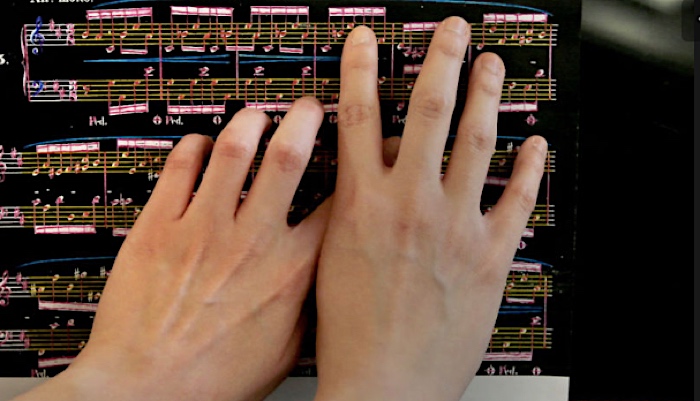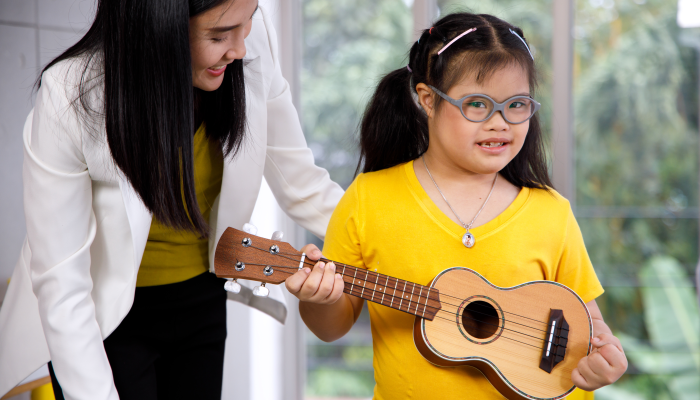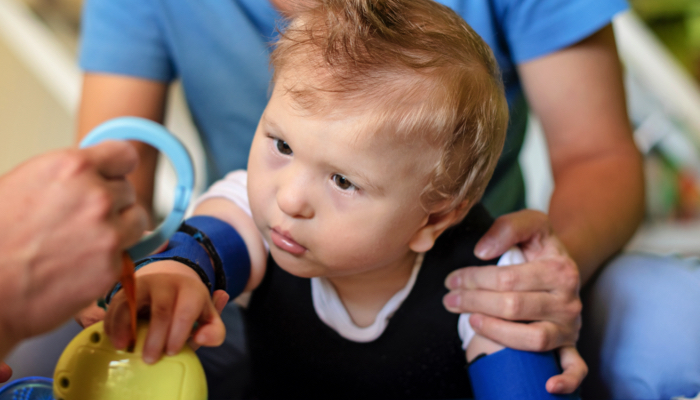Making Music Accessible to Blind Musicians

A blind musician from South Korea has invented a new way to print music, so that both blind and sighted musicians can read it without needing to know braille. This is a big deal because usually blind musicians need to read the scores for the left and right hands separately and then mentally put them together. All while using a fairly complicated braille system.
Yeaji Kim has a bachelor’s in piano performance and a master’s in music education. But it was through her doctoral dissertation that she developed her “Tactile Stave Notation” system; it gives sheet music a slight 3-D quality, raising the staff and notes printed on it.
Kim was concerned that young blind students would be daunted by trying to read music in braille, which spurred her to find a way to encourage them to not give up. And since both sighted people and blind people can read music with her system, music teachers don’t need to know braille to teach their blind students while visually impaired teachers can more easily teach sighted students.
At this point, her system is expensive to produce. She has a provisional patent and is working to raise the legal fees. There’s still a ways to go before this becomes universally available, but for students with visual impairment who love music – whether professionally or just for fun – this is a huge leap forward.
For the complete story, including Kim’s impressive musical journey, check out the full article here.
Related Posts

Autism, Music Play
6 Ways Music Therapy Can Support Children With Autism
By harnessing the power of music, autistic children can develop communication, social, emotional, cognitive, and motor skills. Here’s how!

Eye Conditions and Syndromes, Support, Visual Impairment
Coping with a Diagnosis: Emotional Support for Families with Visually Impaired Children
Families with emotional support are more resilient. Learn how to establish emotional support with peers, professionals, and the community to help your family thrive.

Special Needs, Visual Impairment
Why Early Intervention Is Critical for Blind Children
Children diagnosed with visual processing disorders, low vision, or blindness need specialized treatment. Early intervention programs can help.